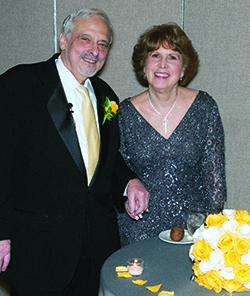Lung Cancer Survivor
Believe You Will Survive — That’s the Key

Dr. Henry Farkas worked much of his life as an emergency room physician and hospice physician. He was familiar with the impact cancer can have on the body, so when he had a metastatic lung cancer recurrence in 2008, he accepted his terminal illness and he and his wife moved out to California to be close to their daughters during what he believed would be the last few months of his life. A visit to a local oncologist, however, led him to life-saving treatment with a newer type of radiation therapy that had recently become available at the facility. He continues to have clear follow-up scans to date.
I had oligometastatic Stage IV lung cancer with tumors in both lungs, two places in the base of my neck, and one place in my brain. I was originally diagnosed in 2006 and treated surgically to remove the lower lobe of my left lung. The tumor had developed behind my heart, against the aorta, but the surgeon was able to remove it all, and my post-treatment CT was clean.
Then, in 2008, a follow-up CT showed three new tumors in each of my lungs and a metastatic tumor in my brain. I underwent highly focused radiosurgery to treat the brain tumor. I began taking palliative therapy. It was designed to give me a few extra months of life without causing serious side effects. I was also offered palliative radiation therapy to my lungs, but declined because the radiation could cause significant damage to my heart.
My wife and I decided to spend my last few months in California closer to our two daughters and six grandchildren. We rented an apartment in Los Angeles near one of our daughters, and I was able to find a lung oncologist near our new home.
He kept me on the same therapy for a few months, but unfortunately, the tumors began to grow again. The drug was causing side effects that had already bothered me, so with the new progression, we decided to stop the treatment. We then found two new tumors at the base of my neck, one on each side. That’s when the oncologist suggested chemotherapy and radiation therapy, not as palliative care, but with the goal of curing my advanced lung cancer. Normally, you don't treat Stage IV lung cancer with curative intent because the treatment itself is likely to cause side effects that reduce quality of life in what may be the last few months that a patient has. And you don’t want to take that risk if you don’t know if therapy will work.
I explained to him that I had already declined palliative radiation because it could lead to congestive heart failure, and from my work in hospice care, I knew I did not want to battle both diseases near the end of my life. He informed me that his center had just installed the next generation of radiotherapy equipment. With the new technology, they could more precisely target the lung tumors, even those very close to my heart, to the point that the risk of damage to healthy tissues was minimal.
I agreed to the treatment with curative intent. Six weeks later, my tumors started to disappear. My last cancer treatment was on September 25, 2008. My scans have been clean ever since.
The message I want to convey is that if radiation therapy is an option for you, make sure you are at a cancer center that is using the latest technology because it can make a huge difference. A second opinion could save your life, no matter what the predicted outcome.


